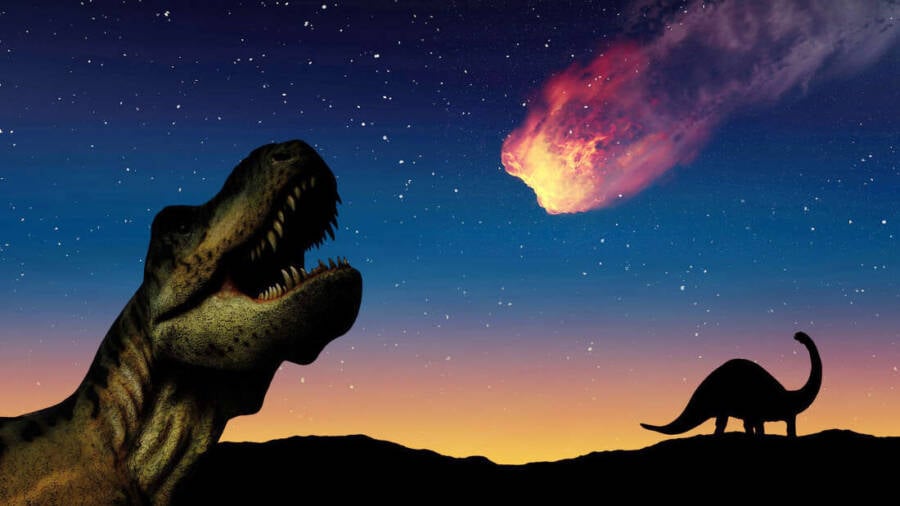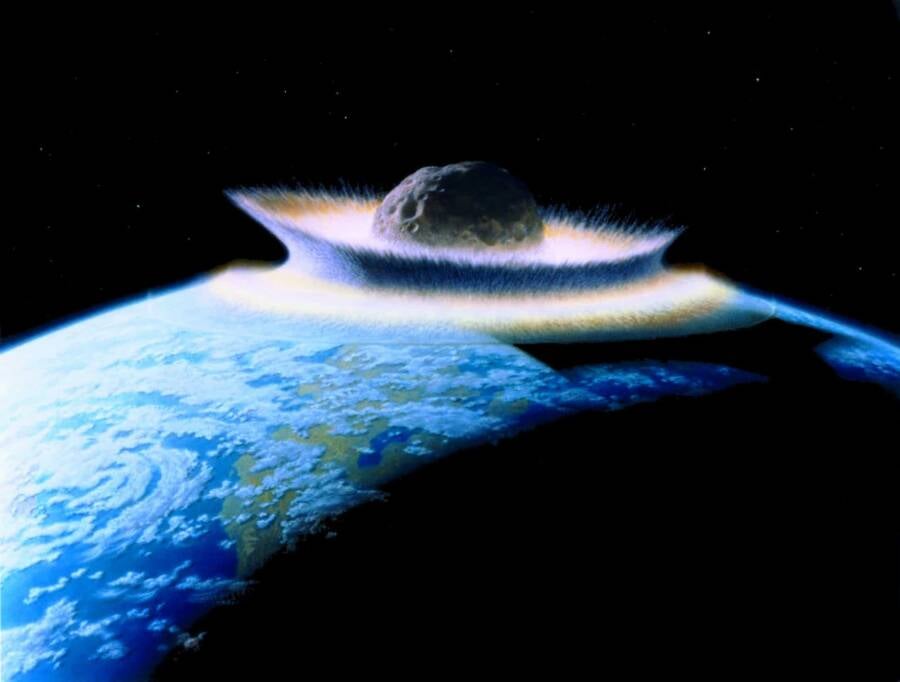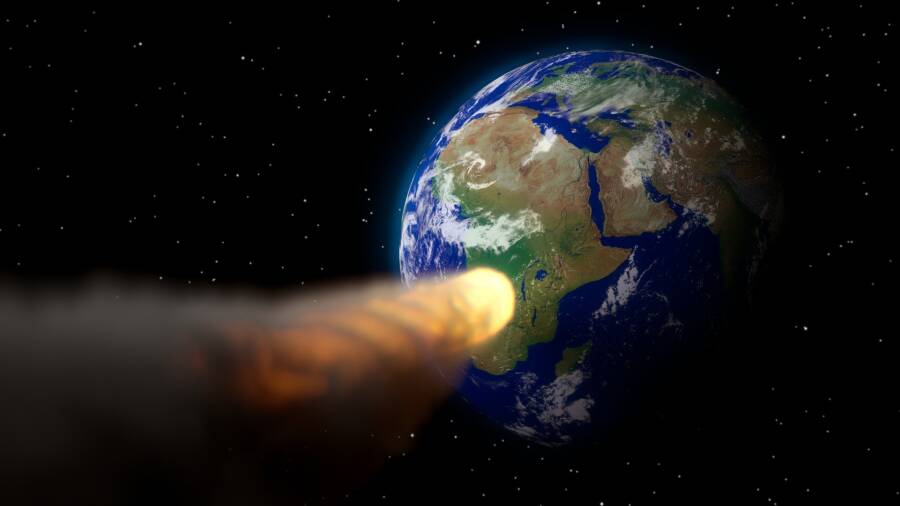Two researchers assert that a comet from the Oort Cloud at the outer edge of the solar system was flung into Earth by Jupiter, killing the dinosaurs 66 million years ago.

PixabayDinosaurs were wiped out by a celestial body that collided with Earth 66 million years ago.
It’s conventional wisdom among scientists that dinosaurs had roamed the Earth for 165 million years when an asteroid collided with Mexico’s Yucatán Peninsula, leading to their extinction. But scientists have long debated where that asteroid originated, and now, a Harvard-based team has suggested that the asteroid was actually a deep-space comet that Jupiter flung into Earth.
“The solar system acts as a kind of pinball machine,” explained lead author of the study Harvard undergraduate Amir Siraj. “Jupiter, the most massive planet, kicks incoming long-period comets into orbits that bring them very close to the Sun.”
Published in the journal Scientific Reports, this controversial new study proposes that the comet originated from the solar system’s outer boundary, known as the Oort Cloud, which is basically a diffuse sphere of icy space debris.
Siraj posits that Jupiter’s immense gravitational pull then flung the comet closer to the Sun, where it was consequently torn apart into four-mile-wide shards, one of which eventually struck Earth and killed the dinosaurs 66 million years ago.
“In a sungrazing event, the portion of the comet closest to the Sun feels a stronger gravitational pull than the part that is further, resulting in a tidal force across the object,” Siraj continued. “You can get what’s called a tidal disruption event, in which a large comet breaks up into many smaller pieces.”
According to Science Focus, however, this theory has already come under harsh critique by established scientists. But Siraj has some intriguing evidence on his side.
Researchers previously found that the 93-mile-wide Chicxulub crater, as the impact site of the celestial body that killed the dinosaurs is now known, was comprised of carbonaceous chondrite, which is a rocky material rarely found among asteroids but is possibly quite common among comets.
Indeed, a 2006 study revealed that carbonaceous chondrites “could potentially be widespread in comets” generally. Siraj and his co-author, theoretical physicist Avi Loeb, now believe that comparable craters, including Vredefort in South Africa and Zhamanshin in Kazakhstan, might also contain carbonaceous chondrites, suggesting that they too were formed by comets and not asteroids.
“The fact that long-period comets are likely to be made of the material — carbonaceous chondrite — that is deep in these craters is in support of our model,” said Loeb.
The study has not only countered the long-held belief that the dinosaurs were wiped out by an asteroid but that around 20 percent of the comets that originate in the Oort Cloud become sungrazers. Based on this data, the study says that it’s 10 times more likely for a sungrazing comet to slam into Earth than previously thought.

Wikimedia CommonsThe study’s model analyzed a population of long-term comets that could’ve grazed the Sun and been flung toward Earth.
The work has faced some academic backlash, however. A senior scientist at the Planetary Science Institute in Tucson, Arizona, for instance, argues that four-mile-wide comet fragments would be too small to cause the massive crater at Chicxulub.
“The projectile size should be consistent not only with the crater size but also with the global amount of iridium,” she said. “This is certainly the case in the standard (asteroid) scenario, but not for a tiny cometary impact.”
For Bill Bottke of the Southwest Research Institute in Boulder, Colorado, Siraj’s model overestimates how frequently comets graze the Sun and get shuttled toward Earth, but has nonetheless admitted that the prevailing asteroid theory has some holes in it. “There’s still wiggle room if somebody really wants it to be a comet. I just think making that case is really hard.”

PixabayFinding further comet fragments will be necessary in shedding light on the controversial hypothesis.
Ultimately, Siraj and Loeb are not alone in their efforts to question the conventional asteroid theory. In 2013, geoscientists Mukul Sharma and Jason Moore also asserted that a smaller comet took out the dinosaurs, and are delighted that their theory has now been substantiated by Siraj’s study.
For now, Siraj and Loeb hope that incoming comet samples will help them to confirm or disconfirm their theory. After all, we’re still living in a cosmic home without a sunroof — and things will continue to fall down from the sky. As it stands, Siraj believes his theory is just as valid as the others.
“To this day, the origin of the Chicxulub impactor remains an open question,” he said.
After reading about the new study suggesting a comet from Jupiter killed the dinosaurs, learn about the Nodosaur dinosaur mummy that was found with its skin intact. Then, check out these 31 dinosaur facts.





